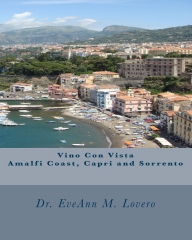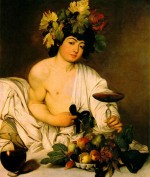 Image via Wikipedia
Image via WikipediaBartolomeo Ammanati’s Fountain of Neptune (1575) is located in the Piazza della Signoria.
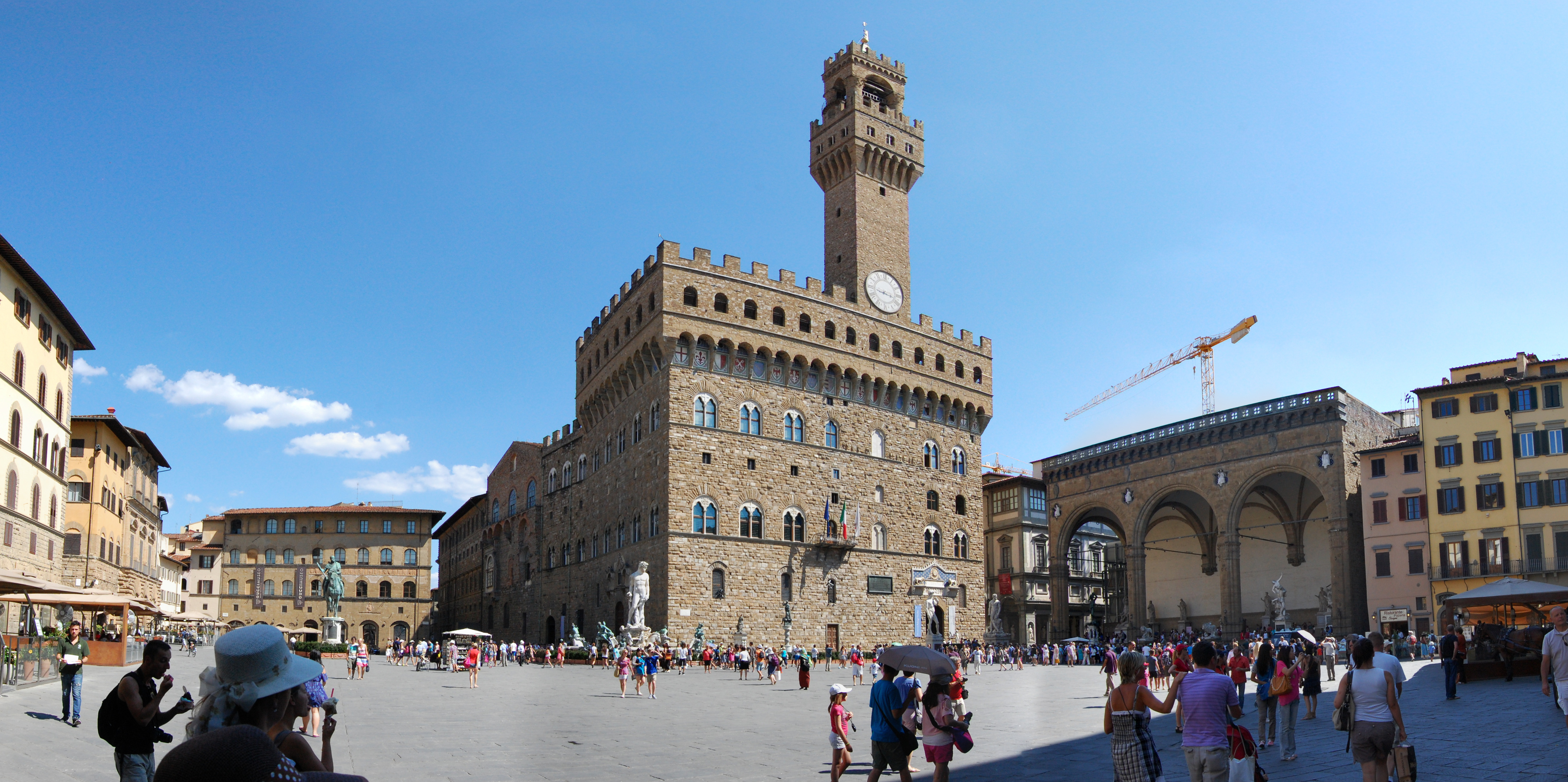 It is my favorite fountain in Florence and it depicts the Roman god of the sea surrounded by water nymphs; built to commemorate Tuscan naval victories. The face of the large figure of Neptune bears a resemblance to Cosimo I. It’s on the Left side of the Palazzo Vecchio.
It is my favorite fountain in Florence and it depicts the Roman god of the sea surrounded by water nymphs; built to commemorate Tuscan naval victories. The face of the large figure of Neptune bears a resemblance to Cosimo I. It’s on the Left side of the Palazzo Vecchio.
Ammanati worked for Duke Cosimo I and served as an architect on the Pitti Palace.
 Neptune
NeptuneBeneath the statue there is a coach drawn by seahorses.
The edge of the fountain is surrounded by bronze figures of Naiads, Tritons and Satyrs.
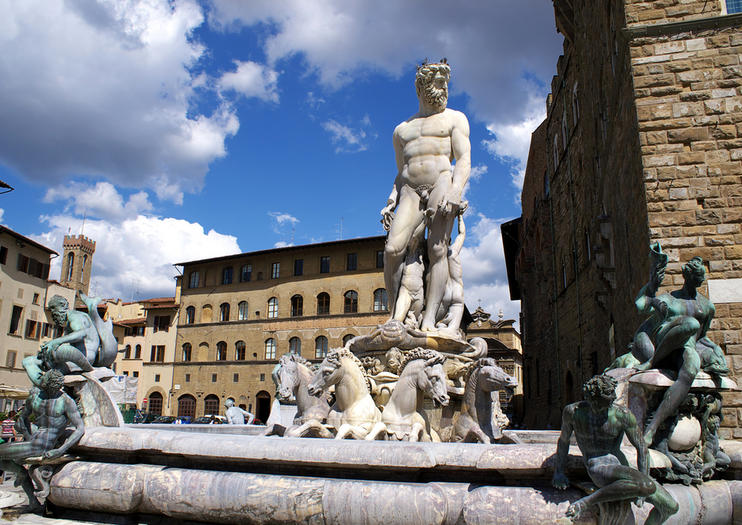
The lion at the base of the statue represents the Florentine Republic.
Piazza della Signoria is an L-shaped square in front of the Palazzo Vecchio.
The Signoria of Florence, was the ruling body of the Republic of Florence.
Take time to explore the sculptures in the Loggia dei Lanzi with wide arches that rest on Corinthian capitals. It’s located on the right side of the Palazzo Vecchio.
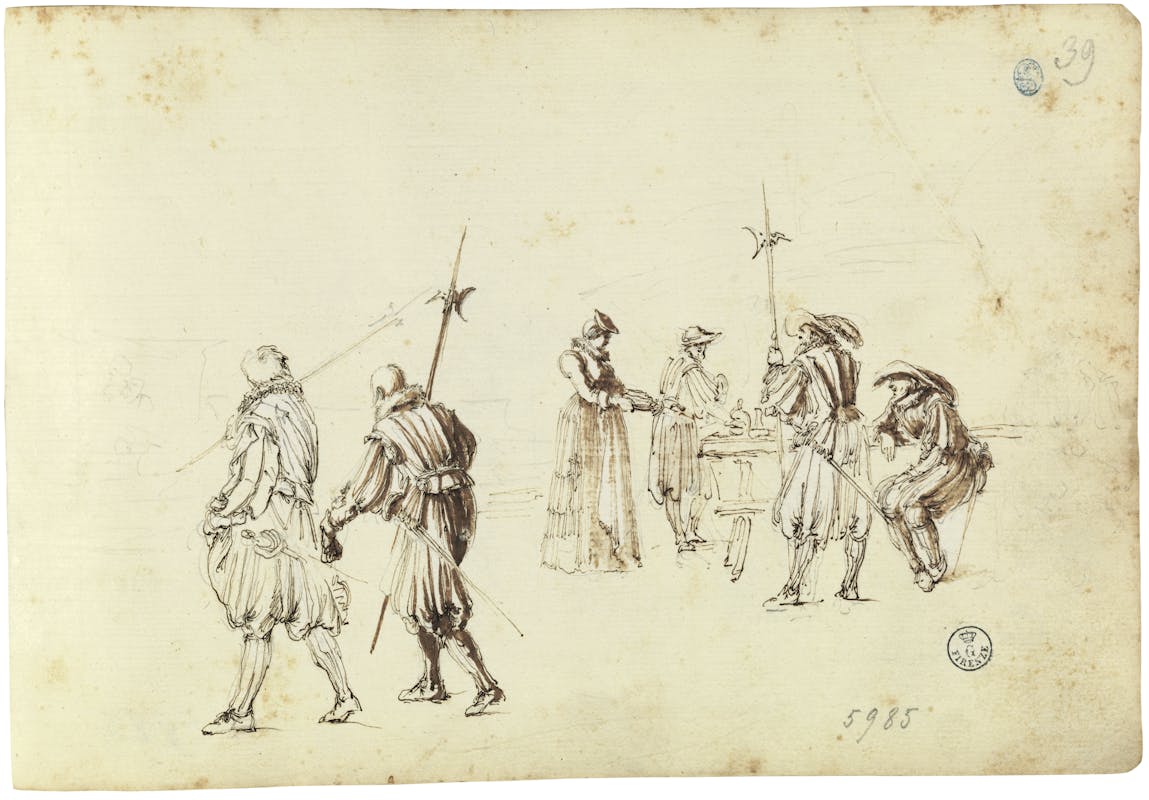
It is known as dei Lanzi after the Lansquenets guards (an abbreviation of the German word “Landsknecht”) whom Cosimo I de Medici stationed his troop of Swiss German Landsknechts, which were called in Italian Lanzichenecchi or Lanzi. The guards’ arrival in Florence in 1541 was one of the ways in which Cosimo I demonstrated his loyalty to the Habsburg Emperor Charles V; many years before he became Duke of Florence.
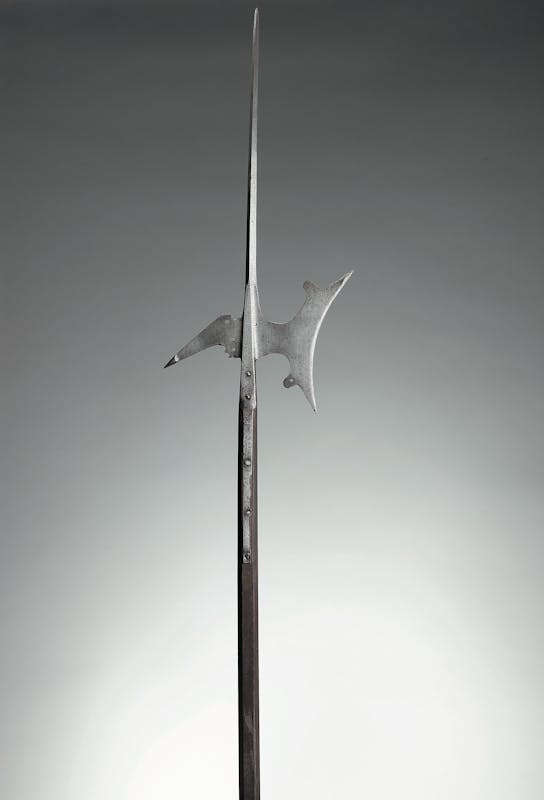
The lancers played a crucial role in the context of the Medici court for almost two hundred years, until 1738. The guard’s chief function was to protect the sovereign and his closest relatives. They appear in almost every event involving the sovereign and are easily recognized by their elaborate costumes and armed with their iconic weapon, the halberd.


On the outside, above the pillars are niches with semi circular lobes with the virtues.




The graceful Loggia dei Lanzi, functions as an open-air sculpture gallery. It was designed by Orcagna in 1376 and built by Benci di Cione and Simone di Francesco Talenti between 1376 and 1382 as a place for the Signoria to hold public ceremonies.
|
Loggia dei Lanzi
The loggia is home to two masterpieces of 16th century sculpture: Perseus and Medusa (1545-54) by Benvenuto Cellini and the Rape of the Sabine Woman (1583) by Giambologna. The entrance to the loggia is flanked by two stone lions (the lion on the left is ancient Roman in origin, while the lion on the right was carved in the late 16th century). The ancient Roman statues (all restored), which stand along the back wall, were brought here from the Villa Medici in Rome. The three sculptures in the center of the loggia are, from left to right, the Rape of Polyxena (1866) by Pio Fedi,  Ajax with the Body of Patroclus (heavily restored Roman copy of a Greek original)
 Hercules Slaying the Centaur Nessus (1599) by Giambologna and Pietro Francavilla.
 |
The marble statue of Perseo holding Medusa’s head, by Benvenuto Cellini (1554), is a stark reminder of what happened to those who crossed the Medici.

Giambologna’s Rape of the Sabines is another beautiful sculpture found under the arches of the Loggia dei Lanzi.
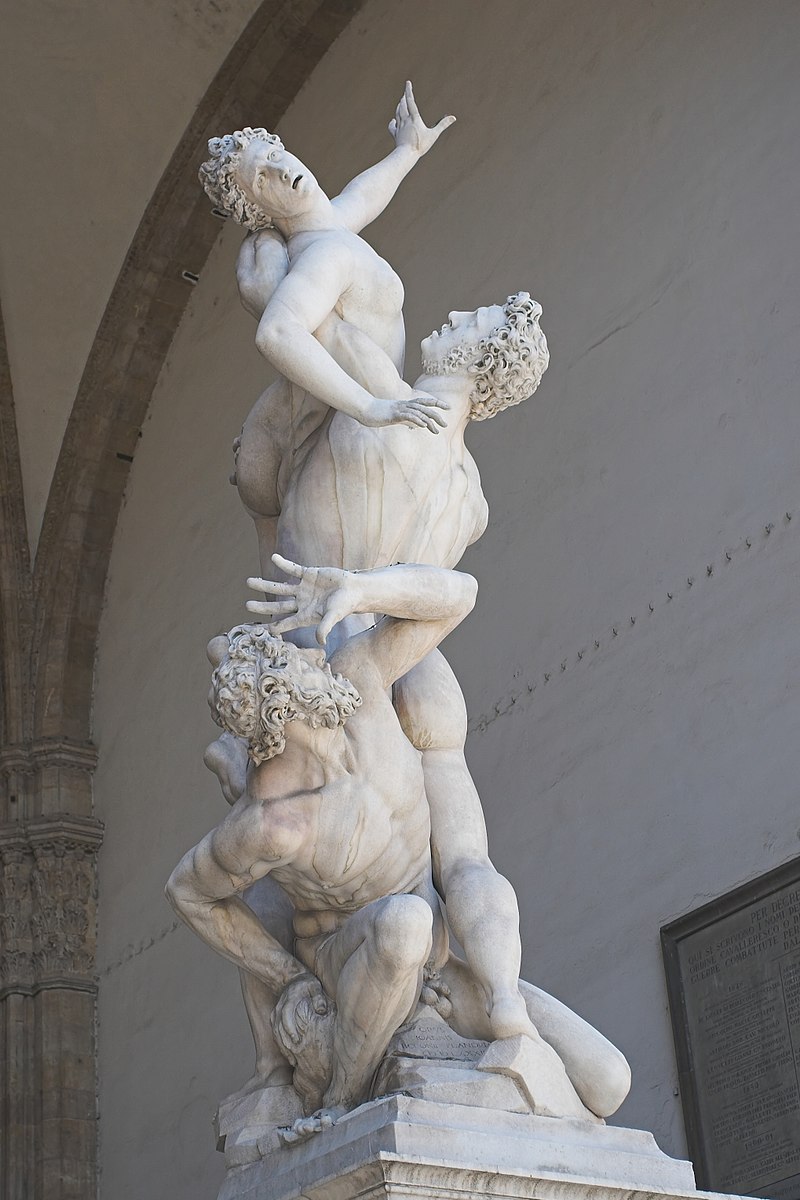
Find this helpful diagram; it explains the sculptures in the Loggia.

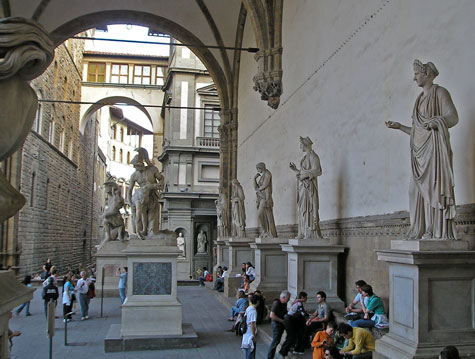

Dr. EveAnn Lovero writes Travel Guides to Italy. Follow my blog at vinoconvistablog.me
To learn more about Florence read www.vino-con-vista.com Travel Guides.






![Reblog this post [with Zemanta]](https://i0.wp.com/img.zemanta.com/reblog_b.png)






